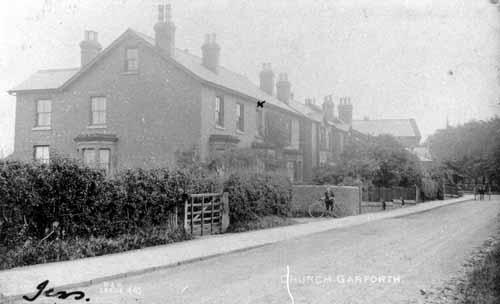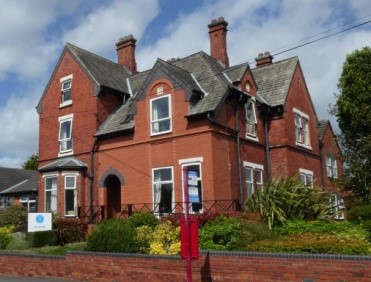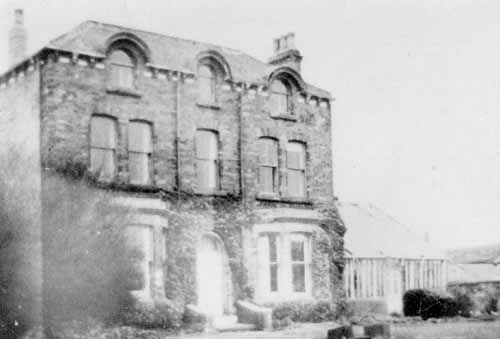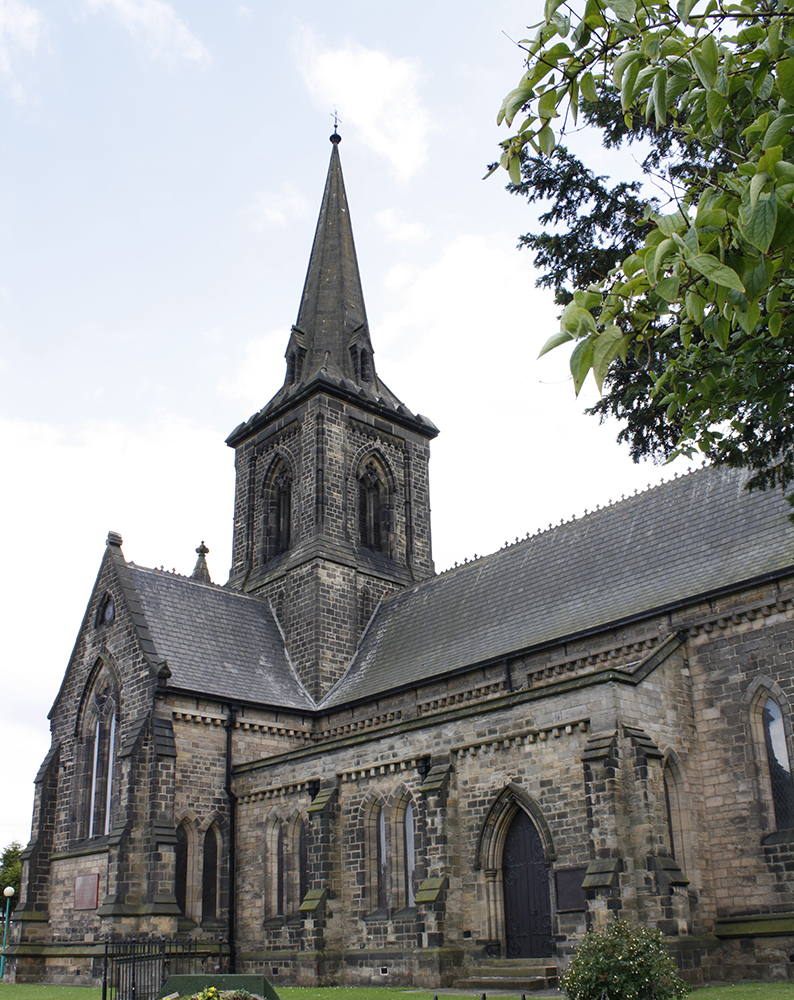Church Lane ” Mushroom Row”


The houses on the right of the later photo were known locally as “Mushroom Row”reflecting the speed with which they were built’
View of the older buildings from the bottom end of Church Lane near the new library
Cricket Ground


The Cricket Club was formed in 1877 and played on a field in Parlington before land was acquired on Church Lane. The new cricket ground was laid out by Job Barber for Gentlemen of Garforth. The team later amalgamated with Garforth Colliery Team to become Garforth Cricket Club. Picture shows spectators at F P Fawcett’s Match in 1909

In c2020 the land came under threat for development. Photo shows the Cricket Ground Entrance with the House on Pinfold Lane
Pinfold Lane


Pinfold Lane– many communities have a Pinfold Lane which relates to an area where stray cattle and sheep were held until the owners were located
Garforth Methodist Church


The first Methodist Chapel in Garforth was a part of the East Leeds Circuit and built in 1806 by the Wesleyans. The site originally measured 12 yards by 9 yards (costing 12 guineas in Church Lane where the present Methodist Church now stands. In 1824 the chapel was enlarged as the population was growing and the congregation was very active in the community. Two years later a Sunday School building was opened as previously Sunday School scholars met in a cottage near the chapel. Later a Wesleyan Day School was founded. By 1879 a larger chapel, capable of seating 600 people was built. The new chapel and work on the school was completed at a cost of £2411 and the chapel opened in 1872. Jabez Woolley, a brick merchant from Leeds and a stalwart Methodist along with his wife Jane, contributed considerably to the cost. In 1880 he became Treasurer. They donated money to build a gantry which was added in 1888 in memory of their daughter. The name Brunswick was given to the Wesleyan Chapel as the Methodist Conference decided that all Methodist Chapels should have a name. The name was given by Joseph Best, a generous supporter of the chapel.
The Hollies


Built in the 19th century, this is a large Victorian House. Built by Jabez Woolley who owned a brickworks at 147 Elland Road in Leeds to which he commuted regularly by train. He used his own bricks. He was a staunch Methodist and benefactor of the nearby Methodist Church (former Wesleyan Chapel) also located in Church Lane. The Hollies is now a residential care home. The front has evidently been extended recently, but in keeping with the original building.
Park Cottage

Park Cottage in Church Lane, is a former coachman’s house belonging to The Grange, a large residence which once stood on the opposite side of Church Lane. There are adjoining gables and an attached barn. Park Cottage was demolished in 1994 to build St. Armand’s Court, a residential 40 bed care home, part of the Hollies residential care home with 28 places for residents, situated next to it.
In 1911 the cottage was the residence of Thomas A Watson -a Land Agents assistant
The Grange

View of The Grange, a substantial creeper-covered residence located in Church Lane. It was once the home of the Curate. In 1891 and 1901 it was the family home of Frederick Gray who owned the Flour Mill on Aberford Road. Later it was occupied by Miss Merry, who ran a nursery school. The house was demolished in the 1960s and Grangefield Court was built on the site. This is a development of apartments for the over 55’s
Image and Copy courtesy of Leodis
Rose Villa

Substantial House located on Church Lane at the entrance to Rose Court. Owned in 1894 by James Rickard who also owned the Sandy Quarry at Garforth Cliffe. It was demolished to make way for the Court.
Documents relating to Rose Villa – From Research by Denis Astin located in Garforth Historical Society Archive.
St Mary’s Church

Garforth is recorded as having a Church in the Doomsday Book of 1086
The current Church was built in 1845, the foundation stone having been laid on Monday 22nd July 1844. It is thought to be the third Church built on this site

